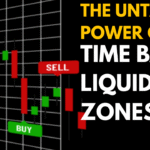Support and resistance stages are the various most fundamental principles in buying and selling. Whether you trade shares, forex, cryptocurrencies, or binary options, expertise the way to pick out those key levels can drastically enhance your trading selections. In this article, we’ll ruin down what guide and resistance are, why they count number, and most significantly—how to draw them correctly for your charts.
What Are Support and Resistance Levels?
Support and resistance constitute rate degrees wherein the marketplace tends to pause, reverse, or consolidate. These degrees act as mental barriers wherein buyers and dealers display expanded hobby.
Support is a fee level wherein call for is powerful sufficient to prevent the price from falling further. It acts as a “floor” for the price.
Resistance is a rate level in which selling strain is powerful sufficient to prevent the fee from rising similarly. It acts as a “ceiling” for the fee.
When these levels preserve, they verify their significance. When they damage, they frequently result in sturdy momentum movements within the course of the breakout.
Why Are Support and Resistance Important?
They Help Identify Entry and Exit Points – Traders use those stages to location buy orders near support and promote orders near resistance.
They Define Risk-Reward Ratios – Knowing in which help and resistance are facilitates set forestall-loss and take-income stages.
They Reveal Market Psychology – Repeated exams of these ranges display where buyers are most energetic.
They Work Across All Timeframes – Whether you’re a day trader or a swing dealer, these ranges apply to all charts.
Now, allow’s dive into the step-with the aid of-step method of drawing support and resistance effectively.
Step 1: Identify Swing Highs and Swing Lows
The first step in drawing guide and resistance is figuring out key swing factors on the chart.
Swing Highs – These are peaks in which the fee made a high earlier than reversing downward.
Swing Lows – These are troughs wherein the rate made a low before bouncing upward.
The extra instances a charge level is examined (touched or nearly touched) without breaking, the more potent that stage will become.
How to Spot Valid Swing Points:
- Look for clean reversals (rate changing path sharply).
- Avoid minor wicks and attention on final charges.
- The greater times a stage is tested, the greater widespread it’s miles.
Step 2: Draw Horizontal Lines at Key Levels
Once you’ve diagnosed swing highs and lows, draw horizontal traces at these tiers.
For Resistance – Draw a line connecting at least swing highs.
For Support – Draw a line connecting at least swing lows.
The more touches a line has, the stronger it’s far. A stage examined 3-5 instances is a ways greater dependable than one tested only once.
Pro Tip:
Use ultimate prices instead of wicks for extra accurate levels.
Adjust lines slightly to suit multiple touches—help and resistance are zones, not actual lines.
Step 3: Watch for Reactions at These Levels
Once you’ve drawn your tiers, examine how rate behaves while it reaches them.
Bounce Reactions – If fee reverses upon touching the level, it confirms energy.
Breakouts – If rate closes decisively beyond the extent, it could sign a fashion change.
False Breakouts vs. Real Breakouts
False Breakout – Price in brief moves past the extent but speedy reverses.
Real Breakout – Price closes strongly beyond the extent with follow-through momentum.
To affirm breakouts, use:
- Volume analysis (higher extent = stronger breakout).
- Candlestick styles (engulfing bars, hammers, and so forth.).
- Multiple time frame affirmation (take a look at better timeframes for alignment).
Step 4: Use trendline for dynamic support and resistance
While horizontal levels are stable, trendline trends provide dynamic support and resistance in the trend markets.
How to Draw Trendline:
- Uprend – connect high climb with a growing trendline (support).
- Downtrend – connect the lower high with a falling trend line (resistance).
The more stator trend line, the more likely it is likely to break it. A soft slope indicates a healthy trend.
Step 5: Mix with other equipment for confirmation
Support and resistance when combined with other technical equipment works best:
Average average – 50 MA and 200 MA often act as dynamic support/resistance.
Fibonacci Recessment – Store FIB levels (38.2%, 50%, 61.8%) often match with support/resistance.
Volume profiles – show where the most trading activity occurred, indicating strong levels.
Pivot points – Intrade is useful for traders to identify daily support/resistance.
Common mistakes to escape
To draw many levels – focus only on the most important people.
To ignore price actions – just because there is a level, it doesn’t mean it will be for confirmation.
User only vicks – closed prices mean more than intraday points.
Forget the time frame, a resistance to the diagram hour does not matter on the daily chart.
Final thoughts
Expert support and resistance practice, but once you have corrected it, your commercial accuracy will improve dramatically. Memorrhery:
Strong levels are tested several times.
The breach requires confirmation – do not jump very quickly.
Arranged with other high -affected shops indicators.
Start using these techniques on your chart today, and you will easily start detecting high exposed business setup.



Pingback: Top Currency Pairs To Trade - Hamza Trading Hub